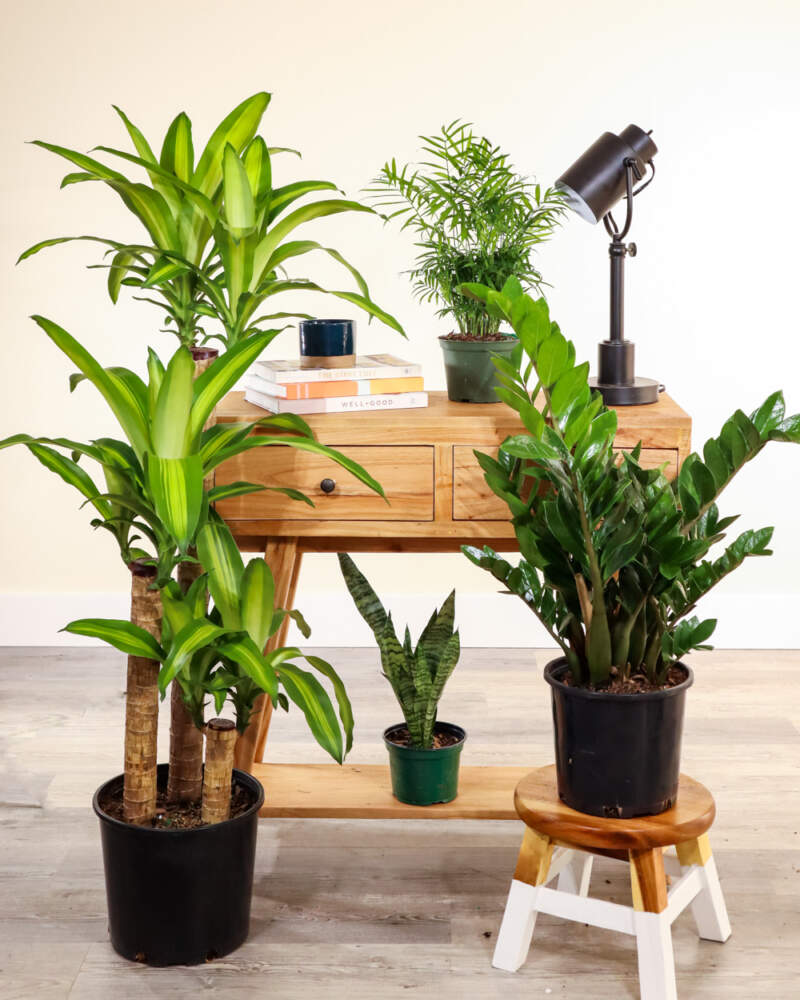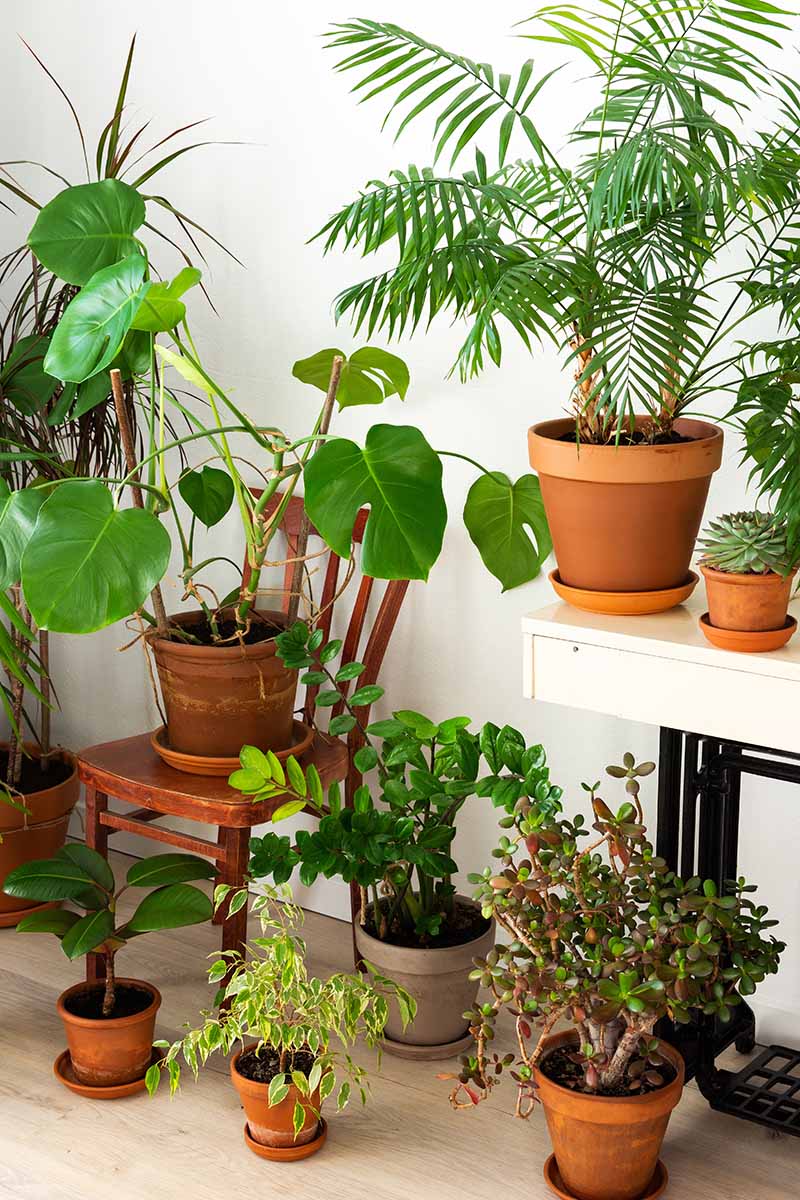Best Low-Light Indoor Plants for Those with Limited Natural Light in Their Homes
Best Low-Light Indoor Plants for Those with Limited Natural Light in Their Homes
Blog Article
Explore the One-of-a-kind Benefits of Low-Light Indoor Plants for Your Living Room
Incorporating low-light interior plants into your living space offers a plethora of advantages that extend far past simple visual appeals. These hardy plants not only prosper in atmospheres with restricted sunlight however likewise offer critical features such as air filtration and humidity enhancement. Furthermore, they can favorably affect your mood and total health while needing minimal upkeep. As you take into consideration the transformative possibility of these plants, it comes to be necessary to explore exactly how their unique qualities can tailor your environment to better serve your way of living. What particular advantages might reverberate most with your individual area?
Air Filtration Benefits
Low-light interior plants not only enhance the aesthetic charm of living areas however additionally play a substantial role in air purification. Research has demonstrated that specific plant types can successfully get rid of usual indoor pollutants, including benzene, trichloroethylene, and formaldehyde. These substances commonly rise from family things such as furnishings, cleansing items, and building materials, adding to indoor air top quality concerns.
Plants such as the serpent plant, pothos, and tranquility lily are specifically experienced at filtering damaging compounds from the air while prospering in low-light conditions. The process of phytoremediation, wherein plants absorb and metabolize toxins, makes it possible for these varieties to add substantially to a healthier indoor environment. In addition, via photosynthesis, plants launch oxygen, additionally improving air high quality.
Incorporating low-light interior plants right into home or workplace areas not only provides visual benefits but also offers as a sensible method for enhancing air quality. By picking the ideal species, people can produce an environment that advertises wellness and reduces direct exposure to dangerous pollutants, making these plants an important component in contemporary indoor living.

Mood Enhancement Results
Numerous researches have actually revealed that integrating indoor plants can considerably enhance mood and total emotional health. The visibility of plant in indoor environments has actually been connected to minimized stress and anxiety levels, enhanced feelings of peace, and boosted psychological health and wellness. Low-light indoor plants, particularly, grow in atmospheres where natural light is restricted, making them best for different living spaces.
Study suggests that communicating with plants can stimulate the launch of serotonin, a natural chemical connected with sensations of joy and well-being. In addition, the act of taking care of plants fosters a feeling of responsibility and success, additional contributing to favorable psychological health end results. Moreover, low-light plants such as snake plants, pothos, and tranquility lilies have been revealed to enhance air quality, which is fundamentally linked to state of mind enhancement.
Incorporating these plants right into your home or office can create a tranquil atmosphere, using a visual and sensory escape from the pressure of life - Best low-light indoor plants. As people spend raising amounts of time inside, the mood-enhancing impacts of low-light interior plants end up being also much more essential, offering not just aesthetic charm yet also an extensive effect on emotional well-being
Reduced Upkeep Requirements
For those seeking to boost their indoor areas without a substantial time visit this web-site commitment, low-light interior plants are an ideal selection because of their low upkeep demands. These resilient plants flourish in less-than-ideal illumination conditions, making them best for homes and workplaces where natural sunlight is limited.

Pest resistance is an additional benefit of low-light indoor plants. Lots of varieties are less prone to usual insects, minimizing the demand for constant tracking and treatment. Furthermore, these plants typically expand extra slowly than their high-light equivalents, suggesting less frequent repotting and pruning are needed.
Aesthetic Charm and Flexibility

Furthermore, these plants can be prepared in myriad ways, whether in groups for a rich impact or as standalone functions to attract the eye. The selections of planter designs-- from sleek ceramic pots to rustic wood containers-- even more boost their visual value, allowing house owners to share their individual design.
In addition, low-light plants can be purposefully positioned in locations that might or else really feel ignored, such as edges or poorly lit shelves, thereby optimizing their attractive possibility. Inevitably, the mix of their striking look and convenience makes low-light interior plants a useful enhancement to any type of home, producing an inviting atmosphere that advertises health and leisure.
Enhanced Humidity Degrees
Enhancing interior humidity levels is one of the substantial advantages of integrating low-light indoor plants right into living rooms. These plants naturally release dampness vapor via a process known as transpiration, which site here takes place when water soaked up by the roots moves via the plant and evaporates from the i was reading this leaves. This procedure not only increases moisture however also adds to a healthier indoor setting.
Enhanced moisture degrees can minimize various wellness problems, such as completely dry skin, breathing problems, and allergic reactions. Lots of individuals experience pain in arid interior conditions, specifically during winter season when heater remain in use. By purposefully putting low-light plants throughout your home, you can create an extra balanced moisture level that promotes overall health.
Additionally, particular low-light indoor plants, like peace lilies and crawler plants, are specifically effective at enhancing moisture (Best low-light indoor plants). Hence, low-light interior plants serve both practical and visual objectives, advertising a healthier atmosphere.
Conclusion
In summary, low-light indoor plants use countless advantages that add to a healthier and more inviting living space. Their capability to cleanse the air, improve state of mind, and enhance moisture degrees highlights their worth as efficient decoration components. Their reduced upkeep demands and aesthetic flexibility make them appropriate for various environments. Incorporating these resilient plants right into interior setups not only elevates the ambiance but additionally advertises general wellness, establishing a peaceful sanctuary for residents.
Plants such as the snake plant, pothos, and tranquility lily are especially adept at filtering system unsafe compounds from the air while flourishing in low-light problems. Low-light plants such as snake plants, pothos, and peace lilies have actually been shown to boost air quality, which is inherently linked to state of mind enhancement.
Low-light interior plants, such as snake plants, pothos, and ZZ plants, not just improve the aesthetic landscape of a space yet likewise present different textures and shades of green that can match varied interior designs. These plants naturally launch moisture vapor with a procedure understood as transpiration, which takes place when water taken in by the origins moves with the plant and vaporizes from the leaves.In addition, certain low-light interior plants, like peace lilies and spider plants, are specifically effective at boosting moisture.
Report this page